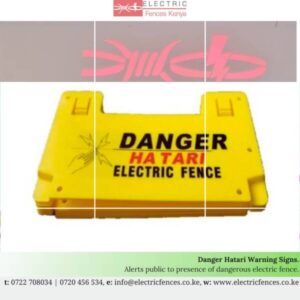In Kenya, where security is paramount, installing an electric fence is a proactive step towards safeguarding your property and loved ones. While the process may seem daunting, with the right guidance and preparation, it can be accomplished efficiently and effectively. In this blog post, we’ll provide a comprehensive step-by-step guide to help you navigate the installation of an electric fence in Kenya, ensuring peace of mind and protection for your home or business. At, Electric Fences Kenya, we will walk with you every step of the way during the assessment, quotation, installation and thereafter maintenance and service of the electric fence.
Conduct a Site Assessment on where the electric fence is to be installed
Before embarking on the installation process, it’s essential to conduct a thorough assessment of your property. Take note of the perimeter boundaries, terrain features, and any existing structures that may impact the placement of the electric fence. For residential security electric fences, this is straightforward as it will be above the perimeter stone wall. However, for farm fences, especially the large ones, it is important to establish the beacon. This process may involve a land surveyor. It is also important to take note of the terrain including rivers and valleys as they will influence the fence design and hence the cost.
Determine Legal Requirements and Community Guidelines:
Familiarize yourself with local regulations and legal requirements pertaining to electric fence installation in Kenya. This may include obtaining permits, adhering to safety standards, and ensuring compliance with property boundaries. It is important to mention, that there are some farms which border wildlife migration routes that may be difficult to fence without involving Kenya Wildlife Services. Also, some community lands may have some challenges if they are fenced since an electric fence might block roads leading to grazing land or water points, rivers or schools. In this cases, it is important to seek guidance from community leaders and also the government personnel who may include chiefs.
Select the Right Equipment:
Choose high-quality electric fence components from a reputable supplier. Here, Electric Fences Kenya has a selection of quality electric fencing equipment and materials. This includes energizers, wires, insulators, earth rods, and other accessories needed for the installation. Consider factors such as fence height, wire tension, and power source compatibility when selecting equipment. It is also important to consider the power source. Solar power is the most reliable source of power for an electric fence, especially farm fences.
Plan the Electric Fence Layout:
Develop a detailed plan for the electric fence layout, considering factors such as property boundaries, entry points, and potential security vulnerabilities. Determine the placement of corner posts, and gate openings, and where to mount the energizer for optimal coverage. Also, it is important to consider future developments including farming activities and animals that may be kept on the farm
Electric Fencing Posts; Corner, End Posts and line posts:
The most crucial component of an electric fence is the fencing post. Using treated wooden posts is the most preferred solution. Wooden posts are affordable and provide a strong post as compared to other fencing posts such as steel or recycled plastic posts. In areas where the soil is waterlogged or there are ferocious termites, for example, it is would make sense to consider other fencing materials. The choice may include steel posts and in some cases customized concrete posts. Reach out to us on 0722708034 / 0720 456534 for professional advice on fencing posts in Kenya.
Install the Energizer and Wiring:
Mount the energizer in a suitable location, preferably indoors or in a weatherproof enclosure. Connect the energizer to a power source, such as a mains supply or solar panel, following manufacturer instructions. Install the main fence wire, insulators, and earth rods according to the planned layout, ensuring proper spacing and tension.
Testing the System and maintenance of the electric fence system:
Once the electric fence is installed, thoroughly test the system to ensure it is functioning correctly. Use a fence tester or voltmeter to measure the voltage output and verify that the fence is electrified throughout its length. Make sure the farm managers and any other person who will be managing the electric fence is properly trained in switching on and off the energizer machine, troubleshooting the electric fence, and minor maintenance and correction of the electric fence.
Warning Signs and Safety Measures for Electric Fences in Kenya:
Install warning signs at regular intervals along the perimeter to alert individuals of the electrified fence. Additionally, implement safety measures such as insulation sleeves, lightning arrestors, and surge protectors to prevent accidents and protect the system from damage. This may include Hatari/Danger Warning Signs. Also, involve the community leaders in sensitizing the community on the electric fence.

Regular Maintenance and Monitoring:
Schedule regular maintenance checks to inspect the electric fence for damage, vegetation interference, or signs of wear. Keep vegetation trimmed away from the fence line to prevent grounding and maintain optimal performance. Monitor the system periodically to ensure continued operation and address any issues promptly.
Conclusion:
Overall, installing an electric fence in Kenya provides numerous advantages, including enhanced security, versatility, cost-effectiveness, and ease of installation and maintenance. These factors make electric fences an attractive option for property owners looking to protect their assets and ensure the safety of their premises.